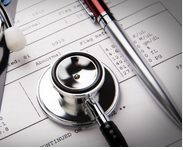 Healthcare Sterile Processing Training Course
Healthcare Sterile Processing Training CourseSterile processing is a critical component in healthcare facilities that ensures the safety of patients by maintaining the sterility of medical instruments and devices. The role of sterile processing professionals is essential in preventing healthcare-associated infections (HAIs) and ensuring the proper functionality and safety of medical instruments.
The Healthcare Sterile Processing course, provided by British Academy for Training and Development, aims to equip healthcare professionals with the necessary skills, knowledge, and best practices in sterile processing. This program will focus on sterilization techniques, infection control, and safety standards in the healthcare environment, ensuring that participants are prepared to meet the demands of sterile processing in their respective organizations.
Who Should Attend?
Knowledge and Benefits:
After completing the program, participants will be able to master the following:
Note / Price varies according to the selected city
Training Course on The Duties of Health Observer
2026-03-02
2026-06-01
2026-08-31
2026-11-30